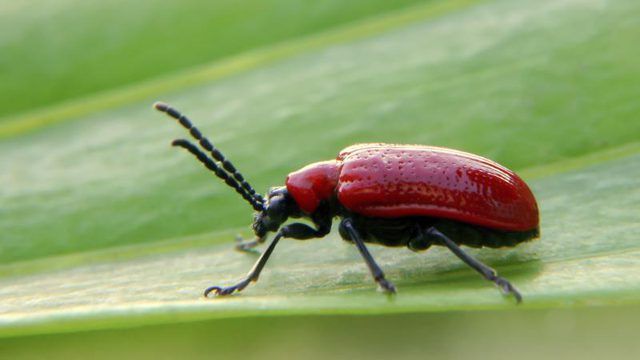Bulbs
Flower Basics
Flower Beds & Specialty Gardens
Flower Garden
Garden Furniture
Garden Gnomes
Garden Seeds
Garden Sheds
Garden Statues
Garden Tools & Supplies
Gardening Basics
Green & Organic
Groundcovers & Vines
Growing Annuals
Growing Basil
Growing Beans
Growing Berries
Growing Blueberries
Growing Cactus
Growing Corn
Growing Cotton
Growing Edibles
Growing Flowers
Growing Garlic
Growing Grapes
Growing Grass
Growing Herbs
Growing Jasmine
Growing Mint
Growing Mushrooms
Orchids
Growing Peanuts
Growing Perennials
Growing Plants
Growing Rosemary
Growing Roses
Growing Strawberries
Growing Sunflowers
Growing Thyme
Growing Tomatoes
Growing Tulips
Growing Vegetables
Herb Basics
Herb Garden
Indoor Growing
Landscaping Basics
Landscaping Patios
Landscaping Plants
Landscaping Shrubs
Landscaping Trees
Landscaping Walks & Pathways
Lawn Basics
Lawn Maintenance
Lawn Mowers
Lawn Ornaments
Lawn Planting
Lawn Tools
Outdoor Growing
Overall Landscape Planning
Pests, Weeds & Problems
Plant Basics
Rock Garden
Rose Garden
Shrubs
Soil
Specialty Gardens
Trees
Vegetable Garden
Yard Maintenance
How to Control Red Lily Leaf Beetles
How to Control Red Lily Leaf Beetles. The clever behavior of creating shields from their own excrement allows immature lily leaf beetles (Lilioceris lilii) to hide from predators. Under this fecal defense, larvae feed on lilies (Lilium spp.), undisturbed, for up to 24 days. With multiple species and hybrids, lilies grow across the country in U.S....

The clever behavior of creating shields from their own excrement allows immature lily leaf beetles (Lilioceris lilii) to hide from predators. Under this fecal defense, larvae feed on lilies (Lilium spp.), undisturbed, for up to 24 days. With multiple species and hybrids, lilies grow across the country in U.S. Department of Agriculture plant hardiness zones 3 through 9. The invasive lily leaf beetle, first discovered in the U.S. in 1992, is most problematic in the eastern states, with only a few incidents of the pest reaching as far as the West Coast. Research into the best control methods is ongoing, but there are a few effective ways to rid your lilies of these destructive beetles.
Manual Control
Bright red adult lily leaf beetles emerge in early spring and immediately feed on lily shoots. This is the best time to stop the spread of the beetles, before they begin laying eggs. Hand pick the pests off your lilies and drop them into a bucket of soapy water. Gently shake the plant over the bucket since these insects often drop to the ground when disturbed. Lily leaf beetles lay clusters of orange-brown eggs on the undersides of leaves. Larvae hide under their black, slimy fecal shield while feeding. Frequently monitor lilies for eggs and larvae throughout the growing season. If they are too difficult to hand remove, pick off the entire infested leaf.
Chemical Insecticide
Insecticidal products containing the oil from neem tree seeds are effective against the early larval stages of lily leaf beetles, shortly after egg hatch. Mix 6 tablespoons of concentrated neem insecticide with 1 gallon of water into a garden sprayer and shake well. Spray all plant surfaces, paying close attention to the undersides of leaves. Repeat the application every five to seven days. Avoid inhalation of the mist and protect eyes, skin and clothing while spraying. Neem products are hazardous to aquatic wildlife. Avoid using this insecticide on or near water areas.
Hybrid Selection
If you live in an area where lily leaf beetles are a problem, consider choosing pest-resistant lily hybrids for your garden. Hybrid lilies are typically separated into two groups -- Asiatic and Oriental hybrids. Those in the Asiatic group bloom in spring and early summer, while Oriental hybrids are late bloomers. Asiatic lilies are more susceptible to lily leaf beetles. Oriental hybrids, particularly Lilium henryi "Madame Butterfly" (USDA zones 5 through 8), Lilium speciosum "Uchida" (USDA zones 4 through 9) and Lilium "Black Beauty" (USDA zones 3 through 8) are significantly resistant to the lily leaf beetle, reports the University of Rhode Island Department of Plant Sciences.
Helpful Predators
Lily leaf beetles are less of a problem to lilies in Europe because there are predators there to keep populations in check. As an introduced species to North America, the beetles have no natural enemies here. The University of Rhode Island conducted controlled releases of tiny European parasitic wasps that specifically target lily leaf beetle larvae. Preliminary research shows that the wasps are becoming established in New England and reducing lily leaf beetle populations. The wasps are not yet commercially available, but you can encourage them into your garden by avoiding the use of broad spectrum, residual insecticides.